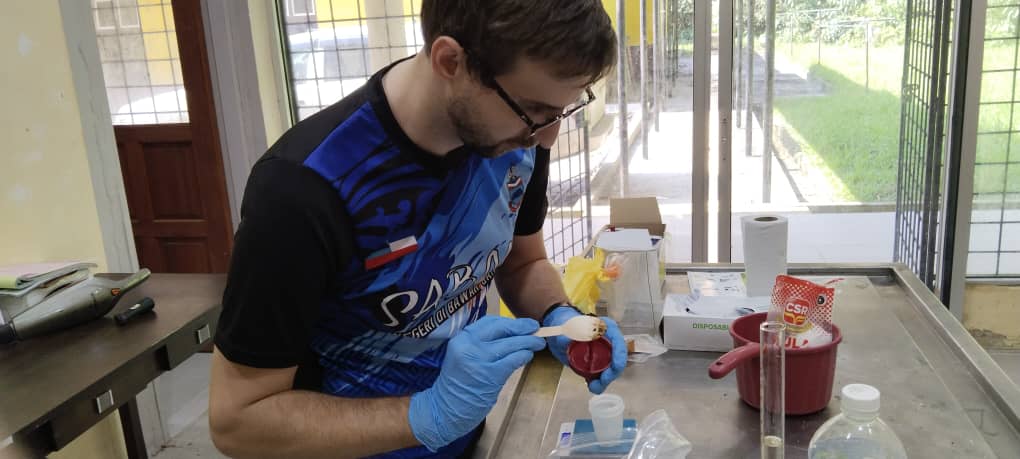Human activities and its impact on the vulnerability of the Bornean banteng in East Borneo
About
The Bornean banteng (Bos javanicus lowi) is the most endangered mammal in Borneo, and the population keeps declining dramatically due to illegal hunting and habitat loss. Interaction with domestic cattle (Bos indicus) and domestic water buffalo (Bubalus bubalis), and the risk of disease transmission and hybridization are other threats for the species. This project aims to gain knowledge regarding disease transmission dynamics and the impact of overlapping populations of banteng, domestic cattle, and domestic water buffalo on parasite sharing.
The area of Tabin WR, Kulamba WR and Sungai Segama FR was chosen as the project sites because it is the only area recording the presence of banteng on the east coast of Sabah, connected by a thin corridor, where the presence of non-confined domestic cattle has raised concerns about hybridization and inter-species disease transmission.
To assess the rate of interaction among banteng, domestic cattle and domestic water buffalo, a camera trap survey in the overlapping zones will be conducted. The presence of parasites will be determined by collecting blood and faecal samples. Transmission risk will be assessed using the information of inter-species interactions, frequency of contact, abundance of identified hosts and abundance of parasites.
Project Update
The team deployed a total of 14 camera traps at the interface areas between the plantations (Northbank and LPC), Kulamba WR and Sungai Segama FR to assess the rate of interaction among banteng, domestic cattle and domestic water buffalo. Although it was discovered that an overlap with the Bornean banteng was not apparent, the study did confirm an overlap between domestic cattle and domestic water buffalo.
Blood samples were acquired from domestic cattle through venepuncture and preserved in EDTA. Blood smears were performed and stained with Giemsa stain. The smears were analysed in the field for blood parasites, including trypanosomes, intracellular blood parasites (Anaplasma spp., Babesia spp., etc.), and microfilariae. No indications of trypanosomes, microfilariae or Babesia spp. were identified in any of the blood samples.
Thirty-eight faecal samples were collected in total. Samples were processed in the field for gastrointestinal parasites, using quantitative flotation and qualitative sedimentation methods. Our examination focused on identifying gastro-intestinal nematodes (roundworms), cestodes (tapeworms), coccidia and flukes
Domestic cattle and buffalo
Gastrointestinal (strongyle-type) nematodes were identified in 77% of the faecal samples attributed to either buffalo or cattle, with infection levels ranging from 0 to 100 eggs per gram (EPG). These findings indicate a generally low-level infection. Fluke eggs belonging to the Paramphistomum spp. (rumen fluke) were present in 53% of the faecal samples. Additionally, the presence of Buxtonella sulcata was suspected in a few samples. Clear examples of Fasciola spp. (liver fluke) were not observed, nor were Strongyloides, coccidia, cestodes visualised.
Bornean banteng
Gastrointestinal (strongyle-type) nematodes were identified in 80% of the faecal samples attributed to banteng, with infection levels ranging from 0 to 240 eggs per gram (EPG). These findings indicate a generally low-level infection. In addition to the typical strongyle-type eggs, other parasites were also detected. These included coccidia (possibly Eimeria spp.), tapeworms (possibly Moniezia spp.), and in one sample, a Trichuris spp. egg. Fluke eggs (Paramphistomum and Fasciola spp.) were not observed.

